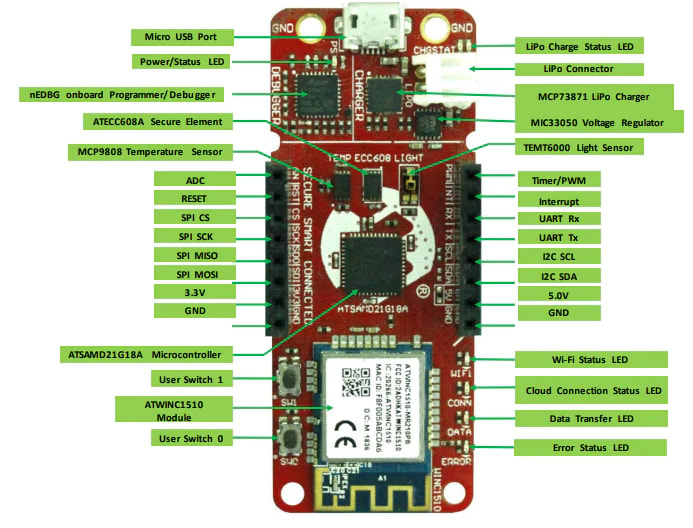Unboxing Microchip SAM-IoT WG Development Board
Follow articleHow do you feel about this article? Help us to provide better content for you.
Thank you! Your feedback has been received.
There was a problem submitting your feedback, please try again later.
What do you think of this article?
In this DesignSpark unboxing video, Kamilla reviews Microchip SAM-IoT WG Development Board (EV75S95A) (209-7648) for rapid prototyping of IoT applications.
Out of the box, the board is already pre-programmed to be connected to Google Cloud IoT core platform and send data from the on-board sensors in 30 just seconds.
If you want to go a bit more in detail on how to get started with SAM-IoT WG Development Board and MPLAB IDE, we have an accompanying article for that.
SAMD21G18A
The SAM IoT WG development board features Microchip’s SAM-D21 Cortex®-M0+ based 32- bit flash microcontroller – SAMD21G18A. With this MCU, you can expect 48 MHz operating frequency and advanced processing features like Single-cycle hardware multiplier and Micro Trace Buffer. It can support up to 256KB of Flash, and 32KB of SRAM and comes in 32-pin to 64 pin QFN/TQFP packages. Another board you might be familiar that features the same MCU is SAM D21 Xplained Pro kit (ATSAMD21-XPRO) (130-6174).
ATWINC1510
The next module on the board is ATWINC1510 (180-7537)WiFi network controller that is compliant with IEEE 802.11 b/g/n wireless standard and supports a single stream mode with 20 MHz bandwidth. The module comes with internal Flash memory of 8 Mb and relies on SPI ports to communicate with the host microcontroller.
ATECC608A
The board incorporates a small, low power ATECC608A cryptographic co-processor, which is compatible not only with SAMD 21 MCU that we have on this board but with all MCUs and MPUs that are offered by Microchip.
Some of the typical use cases for this IC are cloud authentication, message encryption, IP protection and so on, which are the security measures that became a necessity and not a choice for IoT nodes in home automation, wearables, industrial and other applications.
Power
The MCP 73971 charger is used to charge batteries with a minimum capacity of 400mAh. The onboard buck converter MIC 33050 is used for generating 3.3 V to be supplied to the debugger, MCU and other peripherals.
Sensors
The two sensors available on the dev board are MCP 9808 digital temperature sensor and a TEMT 6000 light sensor for measuring the temperatures between -20°C and +100°C and the light intensity up 100 lux.
Debugging
The SAM-IoT WG development board also contains an Embedded Debugger (nEDBG) for onboard programming and debugging without the need for any external hardware.
Expansion options
Finally, there are two mikroBUS sockets here, which means it will be possible to expand the functionality of this dev board by adding Mikroelectronika Click boards or any other mikroBUS add-on boards.
Interested in other embedded solutions from Microchip Technology for Industrial IoT? Check out their page here.


